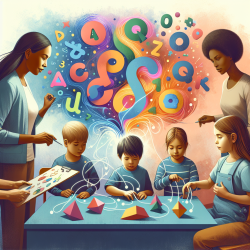Introduction
Recent research has unveiled a fascinating insight into the world of autistic children: a pronounced interest in letters and numbers. This study, titled "Enhanced interest in letters and numbers in autistic children," highlights a potential avenue for speech-language pathologists and educators to harness these interests for improved therapeutic outcomes. By understanding and leveraging these interests, practitioners can create more engaging and effective therapy sessions that cater to the unique developmental pathways of autistic children.
Understanding the Research
The study involved 701 children under the age of seven, including 391 autistic children. It was found that 22 to 37% of autistic children exhibited an intense or exclusive interest in letters, and 17% in numbers. This interest was significantly higher compared to their non-autistic peers. The research suggests that these interests emerge independently of oral language development, offering a unique opportunity to support language acquisition through non-traditional means.
Implications for Practitioners
For practitioners, these findings underscore the importance of incorporating written material into therapy sessions. Here are some strategies to consider:
- Integrate Written Materials: Use books, flashcards, and digital media featuring letters and numbers to engage children during sessions.
- Focus on Self-Directed Learning: Encourage activities that allow children to explore letters and numbers independently, fostering a sense of autonomy and confidence.
- Leverage Technology: Utilize educational apps and games that emphasize literacy and numeracy skills, making learning both fun and interactive.
- Personalize Therapy: Tailor sessions to each child's specific interests, whether it be letters, numbers, or both, to maximize engagement and learning.
Encouraging Further Research
While this study provides valuable insights, there is much more to explore. Practitioners are encouraged to conduct further research to better understand how these interests can be systematically integrated into therapeutic practices. By collaborating with researchers and sharing findings, the field can continue to evolve and improve outcomes for autistic children.
Conclusion
The enhanced interest in letters and numbers among autistic children presents a promising opportunity for speech-language pathologists and educators. By incorporating these interests into therapy, practitioners can create more engaging and effective sessions that support language development. To delve deeper into the original research, please follow this link: Enhanced interest in letters and numbers in autistic children.










